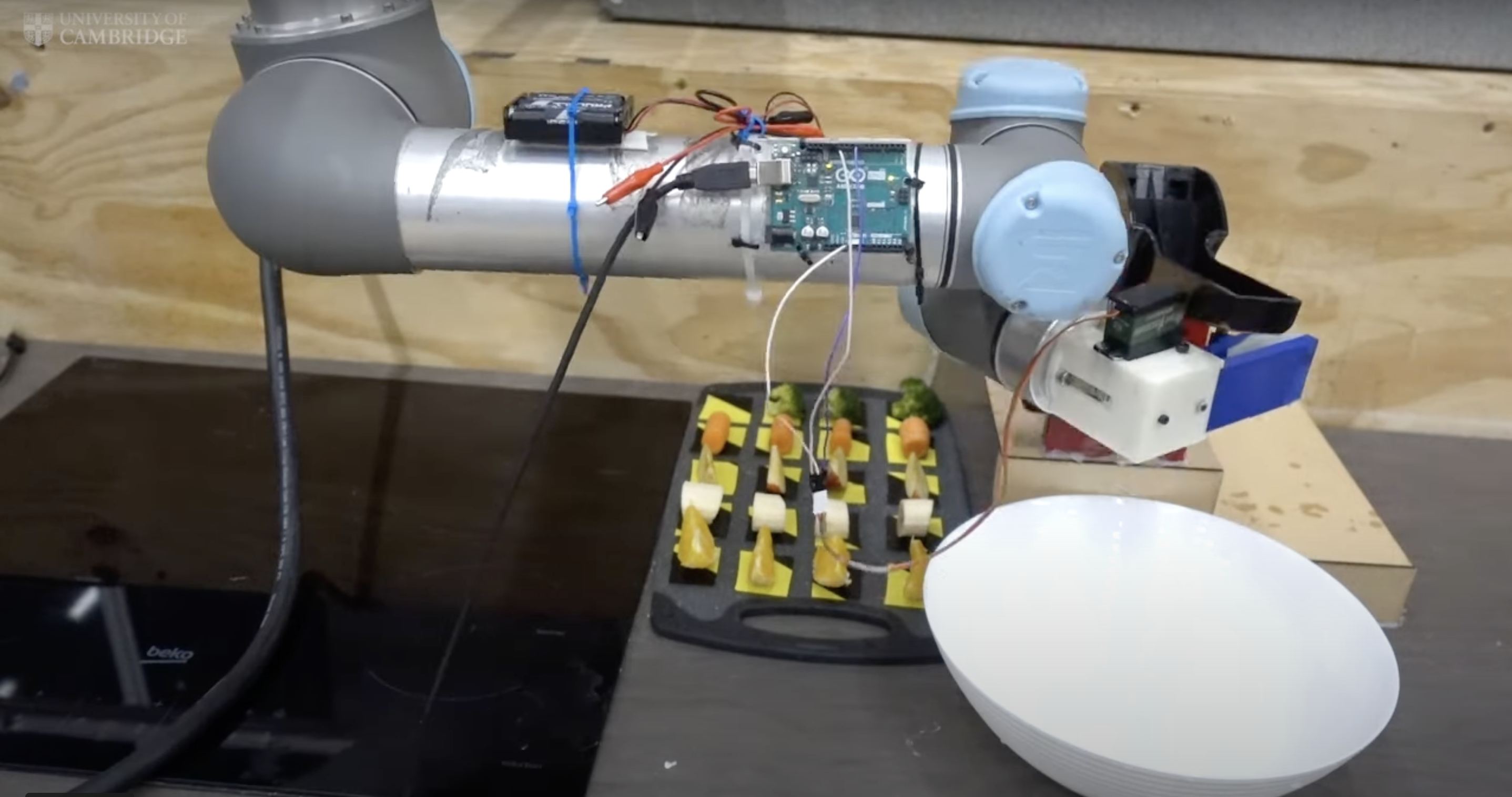This Is The Most Relatable Robot Chef Yet
Finally, a robotic cooking system that learns about food just like us.
Tech has found its way into just about every corner of the food industry, from restaurant prep to meal delivery, and most of them are engineered to be perfect (in theory) at a single set of kitchen tasks. However, a new robot on the scene is cooking food in a manner that's much more relatable to humans: It learns how to prepare meals by watching cooking demonstration videos. Is this the kitchen pal we've always wanted?
Researchers at the University of Cambridge have created a robot chef specifically to address one of the main shortcomings that has kept robotic food prep from becoming more widely adopted: the fact that these machines simply can't compete with the skill level and efficiency of humans doing the same job. While a human chef can learn by example, watching someone else cook a dish and using that knowledge to eventually develop their own version, most robotic cooking technology does not have that capability, instead having all of its "knowledge" programed in, with AI trained to react to narrow sets of circumstances. By contrast, this new robot learns cooking skills in much the same way humans do.
"We wanted to see whether we could train a robot chef to learn in the same incremental way that humans can – by identifying the ingredients and how they go together in the dish," said one of the paper's authors, Grzegorz Sochacki.
For the experiment, the researchers recorded video of themselves making eight simple salad recipes and also programmed the robot with those recipes. The robot was also programmed to identify fruits and vegetables used in the salad (such as broccoli, carrots, apples, bananas, and oranges) and identify objects like a knife. Using "computer vision techniques," it could also recognize the demonstrator's arms, hands, and face in the cooking demo videos.
From there, the robot performed mathematical operations to identify the similarities between the recipes and the demonstrations. By so doing, the robot could then determine which recipe was being made, and could mimic the necessary behaviors to recreate the dish. The robot correctly identified the recipe 93% of the time and was even able to identify a brand new recipe that it didn't have in its "cookbook." It successfully added the recipe to its catalog and reproduced it, all based on the video.
Before the age of TikTok, this author had an entire library of Tasty recipe videos bookmarked on Facebook. Did she watch all of them? Yes. Did she learn from them, or even attempt to make any of the recipes? Nope. Does she remember the actual steps or ingredients involved in any of the videos whatsoever? Not a single one.
The robot's learning curve isn't perfect either. Cambridge researchers noted that the videos observed by the robot are not like the ones seen on social media. For the robot to understand a recipe, demonstrators needed to ensure that each ingredient was clearly visible; there could be no fast cuts away to the finished product or a hand covering an ingredient.
"Our robot isn't interested in the sorts of food videos that go viral on social media – they're simply too hard to follow," said Sochacki. "But as these robot chefs get better and faster at identifying ingredients in food videos, they might be able to use sites like YouTube to learn a whole range of recipes."
